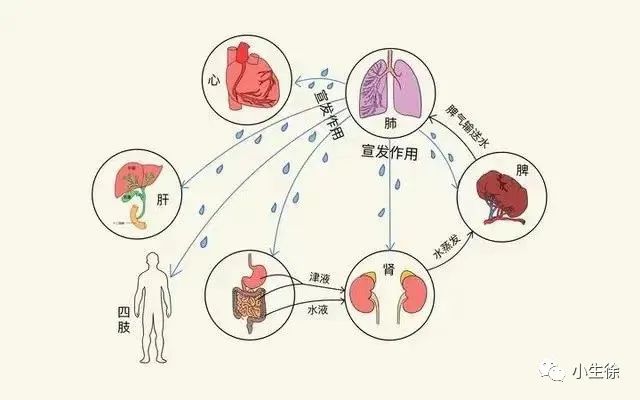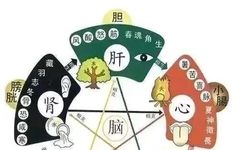The Five Organs: Liver, Heart, Spleen, Lung, Kidney
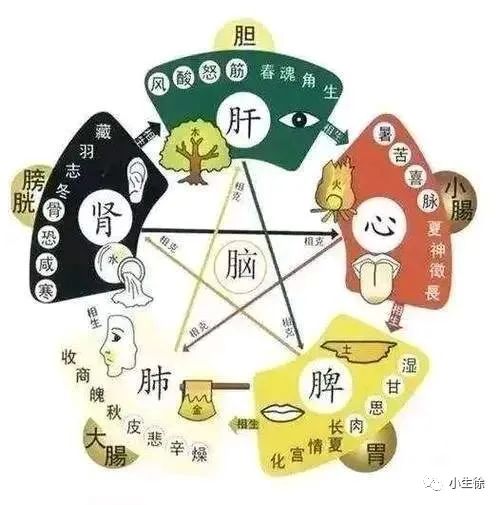
The five organs are responsible for the transformation and storage of essential qi (primarily used to store various subtle substances necessary for human life activities, such as essence, qi, blood, and body fluids) — they store without leaking, and are full without being solid.
Heart
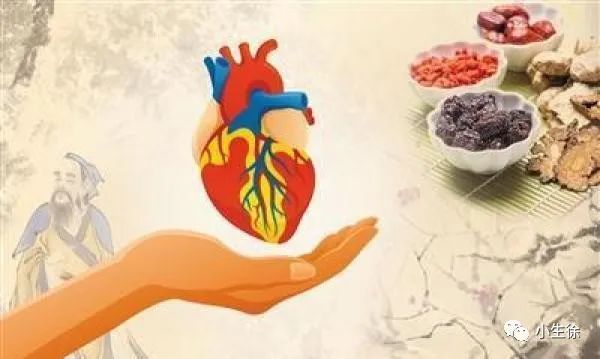
The Heart Governs Blood Vessels: “All blood belongs to the heart.” ①The Heart Governs Blood:
a. The heart qi drives the circulation of blood throughout the body, supplying nutrients to all tissues, organs, limbs, muscles, skin, and even the heart vessels themselves, all of which require the nourishment of blood to function normally and maintain life activities.
b. The heart generates blood; although the source of blood production comes from the transformation of food essence by the spleen and stomach, the essence must also be transported by the spleen’s function of ascending and dispersing to the heart and lungs, where it transforms into red blood under the influence of heart qi and heart yang. ②The Heart Governs Pulses: The pulse refers to the vessels, also known as meridians; the vessels are the abode of blood and the channels for blood circulation. The heart connects with the vessels, spreading throughout the body to form a closed, independent circulatory system. Heart qi drives and regulates the heartbeat, maintaining the smooth flow of the vessels. Three necessary conditions: abundant heart qi, sufficient blood, and unobstructed vessels. The Heart Governs Spirit (Consciousness): The heart coordinates the physiological activities of the five organs and six bowels, as well as the mental activities of spirit, consciousness, thought, and emotions. The relationship between the heart governing blood vessels and the heart governing spirit is very close; blood serves as the material basis for mental activities, thus “the heart governs blood vessels” provides the material foundation for “the heart governs spirit”; the normal function of “the heart governing spirit” promotes the function of “the heart governing blood vessels.” The Heart is Associated with Joy (Joy harmonizes qi and spirit, allowing for smooth circulation of nutrients): Generally, people refer to anger, joy, thought, sadness (worry), and fear as the five emotions. The changes in these five emotions arise from the physiological functions of the five organs, thus the five emotions correspond to the five organs. The heart’s emotion is joy; the heart regulates the generation and change of joy, which is a pleasant emotional response to external stimuli. Appropriate joy can harmonize blood and qi, promote a clear mind, and benefit physical and mental health, but excessive joy can harm the heart spirit. Analyzing from the physiological function of the heart governing spirit, it includes both excess and deficiency; excessive function of the heart governing spirit can lead to uncontrollable laughter, with mild cases causing distraction and severe cases leading to mental breakdown, and can also be seen in cases of sudden heart qi loss leading to death; insufficient function of the heart governing spirit can easily lead to sadness. The heart is the master of spirit; abnormal emotions can harm the heart, and not only can joy harm the heart, but all five emotions in excess can damage the heart spirit.
The Heart is Associated with the Pulse, Its Manifestation is on the Face ①The Heart is Associated with the Pulse: All blood vessels belong to the heart, which governs and regulates them. The pulse reflects the strength of heart qi and the abundance or deficiency of heart blood. ②Its Manifestation is on the Face: The manifestation refers to the external appearance and brilliance. Traditional Chinese medicine believes that the strength of the functions of the body’s organs can be reflected on the surface of the body, known as external manifestation. The skin of the face is exposed and can be directly observed; it is relatively thin and sensitive to blood vessel dilation and contraction, allowing changes in the color, expression, and eye movements of the face to reflect the changes in heart function and the abundance or deficiency of heart qi and blood. The Heart is Associated with the Tongue (Heart qi connects to the tongue; when the heart is harmonious, the tongue can perceive the five flavors): The tongue is the external manifestation of the heart, also known as “the tongue is the seed of the heart.” The heart and tongue are closely related; changes in the shape and function of the tongue can reflect the state of the heart. The movement of the tongue reflects an important aspect of “the heart governing spirit”: ① The tongue contains various skeletal muscles, which have rich blood supply; blood provides energy and nutrients for the normal activity of the tongue muscles, and the circulation of blood mainly relies on the heart’s driving force. Thus, the heart ensures the normal function of the tongue through its function of “governing blood vessels.” ② Blood also timely removes the metabolic waste of tongue activity. When the heart functions normally, the tongue is soft, the tongue body is red, speech is clear, and movement is flexible. Clinically, observing changes in the shape and color of the tongue can infer pathological changes in the heart. The Heart is Associated with Sweat (What is stored within is blood; what is released outward is sweat; sweat is the fluid of the heart): “The five organs transform fluids, and the heart governs sweat,” hence the saying “sweat is the fluid of the heart.” Blood and body fluids share the same origin, and sweat is transformed from body fluids. This physiological characteristic of sweat being governed by the heart can also be confirmed pathologically; insufficient heart yang can lead to spontaneous sweating, while severe cases can result in profuse sweating. Insufficient heart yin can lead to night sweats; conversely, excessive sweating can cause palpitations, indicating that excessive sweating can deplete heart qi and damage heart yang. Functions: The Heart Governs Blood Vessels; The Heart Governs Spirit (Consciousness) Characteristics: The Heart is Clear and Bright; Heart Fire Should be Descended; Connections: The Heart Houses the Spirit; The Heart is Associated with Joy; The Heart is Associated with the Pulse, Its Manifestation is on the Face; The Heart is Associated with the Tongue; The Heart is Associated with Sweat; The Heart is Associated with Summer
Lung
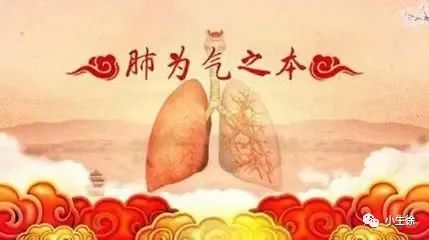 The Lung Governs Qi
The Lung Governs Qi
The lung governs qi, which includes managing the qi of respiration and the qi of the entire body: ①The Lung Governs Respiratory Qi: The lung inhales the clear qi from the environment and exhales the turbid qi from the body through respiration. By continuously expelling the old and taking in the new, the gases within the body are constantly exchanged, ensuring smooth metabolism. The lung is the site of gas exchange; lung qi promotes the expulsion of turbid qi and the inhalation of clear qi. ②The Lung Governs the Qi of the Whole Body: The lung has the function of managing and regulating the qi of all organs and meridians, specifically reflected in two aspects: a. The generation of qi, especially the generation of zong qi (ancestral qi), which is formed by the combination of clear qi inhaled by the lung from the environment and the essence of food transformed by the spleen and stomach. Zong qi ascends to the throat, promoting the lung’s respiratory movements, nourishing the organs and tissues to maintain normal activities. The health of the lung’s respiratory function not only affects the generation of zong qi but also influences the generation of qi throughout the body; b. The lung’s governance of the body’s qi also reflects its regulatory role over the movement of qi throughout the body. The lung, as the master of qi, regulates the movement of qi throughout the body, which refers to the movement of qi, with ascending and descending being its basic forms. In other words, the lung rhythmically inhales and exhales, playing an important regulatory role in the movement of qi throughout the body.
The Lung Governs Dissemination and Descending
The lung has two mutually coordinated physiological functions: ①The Lung Governs Dissemination: Lung qi has the physiological function of ascending, dispersing, and diffusing, mainly reflected in three aspects: a. The lung’s dissemination continuously expels turbid qi from the body; b. It distributes body fluids, food essence, and qi and blood throughout the body to nourish and moisten all organs; c. It disseminates defensive qi, regulating the opening and closing of the pores, transforming the metabolized body fluids into sweat for expulsion. ②The Lung Governs Descending: Descending includes the meanings of clearing and descending; the lung has the function of expelling various foreign substances and toxins from the lung to maintain smooth breathing and stable respiration, mainly reflected in three aspects: a. Through the lung’s respiratory function, it inhales clear qi from the environment; b. It combines the clear qi inhaled by the lung with the essence of food to form zong qi, which then descends and distributes; c. It clears foreign substances and turbid fluids produced by the metabolism of the organs from the respiratory tract. The Lung Regulates Water Pathways (The Lung Governs Water): “When fluids enter the stomach, they flow through the essence, ascend to the spleen, where the spleen qi disperses the essence, and then returns to the lung, regulating the water pathways, descending to the bladder, distributing the water essence, and allowing the five pathways to function together.” “Regulating” means to clear and guide; “pathways” refers to the routes of fluid movement and excretion. The lung’s function of regulating water pathways refers to the role of lung qi in the distribution, movement, and metabolism of body fluids, mainly relying on the lung’s functions of dissemination and descending: the lung governs dissemination, allowing food essence and body fluids to be distributed throughout the body, and it can also regulate the excretion of sweat through the sweat pores, ensuring normal sweat discharge; the lung governs descending, continuously transporting body fluids downward, generating urine through the kidney and bladder’s qi transformation, and expelling it from the body, maintaining smooth urination. The Lung Connects to All Vessels: “When food qi enters the stomach, turbid qi returns to the heart, and the essence flows through the vessels, the vessel qi returns to the lung, which connects to all vessels, distributing essence to the skin and hair.” “Connects” means gathering and converging; “all vessels” refers to all the vessels in the body. The lung connects to all vessels, meaning that all blood flows through the vessels converge in the lung, where gas exchange occurs, and then the blood, after gas exchange, is distributed throughout the body through the lung’s functions of dissemination and descending. The normal circulation of blood relies on the promotion and regulation of lung qi, thus the lung assists the heart in circulating blood. The Lung Governs Regulation: Regulation means governance and adjustment; the lung assists the heart in regulating the qi, blood, body fluids, and the physiological functions of the organs, mainly reflected in four aspects: a. The lung governs respiration, regulating and adjusting the lung’s respiratory function; b. It regulates the movement of qi throughout the body, ensuring the organs function in a coordinated manner; c. It assists the heart in regulating blood circulation, promoting the exchange of blood and qi; d. Through the lung’s functions of dissemination and descending, it governs and regulates the distribution, movement, and excretion of body fluids. The Lung Governs Skin and Hair: The lung’s physiology and pathology are closely related to the nourishment and health of the skin and sweat glands. The lung governs dissemination, allowing body fluids to spread throughout the body, nourishing the skin and hair; the skin can also regulate the lung’s respiration, and the skin and lung work together, allowing for minor gas exchange through the opening and closing of the pores and the lung’s functions of dissemination and descending to coordinate lung respiration. The Lung is Associated with Worry (Sadness): Worry refers to sorrow and anxiety; sadness refers to feelings of grief and sorrow. Both worry and sadness are adverse emotional responses generated by external environmental stimuli, which can negatively affect the body by continuously depleting lung qi and causing qi stagnation. The Lung Opens to the Nose: The lung governs respiration, and the nose is the passage for breathing, having the function of ventilation. The lung connects with the environment through the nose; in addition to its ventilation function, the nose also has a sense of smell, and both functions depend on the lung’s regulation. “Lung qi connects to the nose; when lung qi is harmonious, the nose can discern odors.” The Lung is Associated with Mucus: Mucus is a type of fluid secreted by the nasal mucosa from the lung’s dissemination of body fluids, which has a moisturizing function for the nasal passages. Functions: The Lung Governs Dissemination; The Lung Governs Qi; The Lung Governs Water (Regulating Water Pathways); The Lung Connects to All Vessels; The Lung Governs Regulation Characteristics: The Lung is the Canopy; The Lung is Delicate; Prefers Moisture and Dislikes Dryness; Lung Qi Should Descend Connections: The Lung Houses the Corporeal Soul; The Lung is Associated with Worry (Sadness); The Lung is Associated with Skin, Its Manifestation is on Hair; The Lung is Associated with the Nose, the Throat is the Portal of the Lung; The Lung is Associated with Mucus; The Lung is Associated with Autumn
Liver
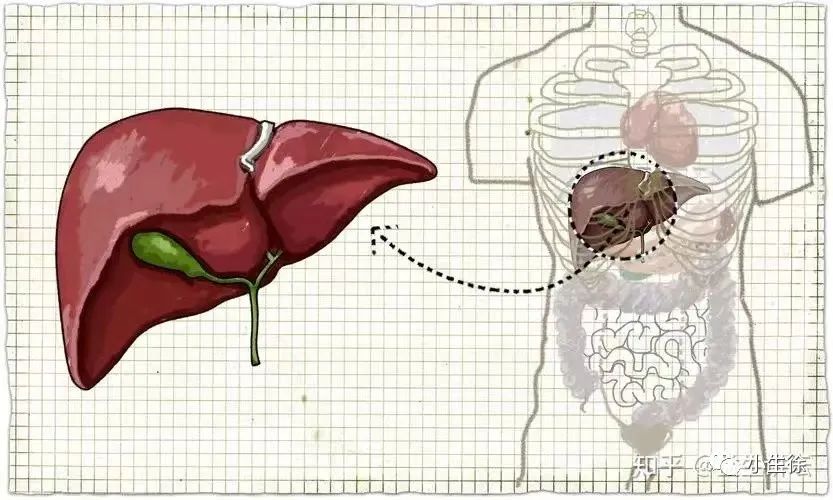
The Liver Governs Regulation and Dispersal: Regulation means to clear; dispersal means to release and elevate. The liver governs regulation and dispersal, meaning that liver qi has the physiological function of maintaining the smooth flow, clarity, and circulation of qi throughout the body, mainly reflected in five aspects: ①Regulating Qi Movement: Qi movement is the basic form of the activities of qi, blood, meridians, organs, and tissues in the body. The normal function of the liver’s regulation and dispersal is reflected in the smoothness of qi movement; when functioning normally, qi movement is smooth, blood is harmonized, and the meridians are unobstructed, allowing the physiological activities of all organs to function normally. When the function is abnormal, qi movement becomes disordered, leading to various diseases, such as liver qi stagnation. ②Regulating Blood Circulation and Body Fluid Metabolism: The movement and metabolism of blood rely on the driving force of qi and the smoothness of qi movement. When liver qi is regulated and dispersed, qi movement is smooth, allowing blood to circulate throughout the body, maintaining unobstructed blood circulation. Additionally, the liver’s dispersal function plays an important role in promoting body fluid metabolism and maintaining its balance. The regulation and dispersal of liver qi help maintain the smoothness of the three burners’ water pathways, ensuring the unobstructed movement of body fluids. ③Promoting Digestion and Bile Secretion: The spleen and stomach are the main organs responsible for digestion, and the liver’s regulation and dispersal function plays an important assisting role in digestion. The spleen’s qi ascends for health, while the stomach’s qi descends for harmony; only when the spleen and stomach coordinate can the digestion of food proceed normally. The liver’s regulation and dispersal function not only smooths qi movement, allowing the spleen and stomach’s qi to coordinate, thus promoting digestion, but also relies on the secretion and excretion of bile. The gallbladder is connected to the liver, and bile is formed from the residual qi of the liver; thus, the secretion and excretion of bile are also influenced by the regulation and dispersal function. ④Regulating Emotional Activities: Human emotional activities include joy, anger, worry, thought, sadness, fear, and shock. These seven emotional activities, aside from being governed by the heart, are closely related to the liver’s regulation and dispersal function. This is because normal emotional activities depend on smooth qi movement, and the liver can regulate qi movement, thus the liver has the function of regulating emotional activities. When functioning normally, blood and qi are balanced, and the mood is cheerful, without excessive excitement or depression, allowing emotional activities to proceed normally. ⑤Regulating Semen and Ovulation: The expulsion of semen in men and the menstrual cycle and ovulation in women are closely related to the liver’s regulation and dispersal function. For men, when the liver’s regulation and dispersal function is normal, semen is expelled smoothly; when the liver fails to regulate and disperse, semen expulsion becomes obstructed. For women, when the liver’s regulation and dispersal function is normal, menstruation proceeds smoothly, with a regular cycle and volume; when the liver fails to regulate and disperse, qi movement becomes disordered, leading to menstrual irregularities. Due to the liver’s regulation and dispersal function being particularly important for women’s menstruation and reproductive functions, traditional Chinese medicine states that “women rely on the liver for their innate constitution.” The Liver Governs Blood Storage: The liver’s blood storage refers to its physiological function of storing blood, regulating blood volume, and preventing bleeding. Among these, regulating blood flow is one of the main functions of the liver’s blood storage. The liver acts like a blood reservoir, being the main organ for blood storage in the body. When the body is relatively calm or emotions are stable, the amount of blood required decreases, and some blood is stored in the liver. When the body is active or emotions are excited, the demand for blood increases, and the liver releases the stored blood through the movement of qi to nourish the functions of various organs and tissues. Thus, traditional Chinese medicine states, “When a person moves, blood flows through the meridians; when a person is still, blood returns to the liver.” The liver’s ability to store blood and its function of regulating and dispersing are interdependent and mutually restrictive. Under normal physiological conditions, when liver blood is sufficient, it can restrain excessive liver yang, ensuring the normal function of the liver’s regulation and dispersal, allowing for smooth and clear movement; when the liver’s regulation and dispersal function is normal, qi movement is smooth, allowing blood to circulate throughout the body, thus realizing the liver’s blood storage function. The Liver is Associated with Anger: Anger often manifests as excitement, indignation, and other emotional states. For physiological activities, anger is an adverse stimulus response, primarily causing liver qi to rise, leading to excessive liver yang and even internal wind, hence the saying “anger harms the liver.” The Liver is Associated with Tendons, Its Manifestation is on Nails: Tendons are connective tissues that attach to bones and gather at joints, maintaining the activities of limbs. The liver governs tendons, meaning that the liver is closely related to the relaxation and contraction of all tendons. The liver’s ability to govern tendons is because the nourishment required by the tendons relies on the supply of liver blood. When liver blood is abundant, the tendons receive sufficient nourishment, allowing for normal movement. Nails, which include fingernails and toenails, are considered “the excess of tendons” in traditional Chinese medicine, meaning that nails are the external manifestation of tendons. The Liver is Associated with the Eyes: The eyes, also known as “the organs of clarity,” are the visual organs. The liver opens to the eyes, meaning that the liver’s essence connects to the eyes. “The liver nourishes blood, allowing for vision;” “When liver qi flows to the eyes, the liver is harmonious, and the eyes can distinguish five colors.” This indicates a close relationship between the eyes and the liver; as long as the eyes receive nourishment from liver blood, their visual function can be realized. The Liver is Associated with Tears: The liver opens to the eyes, and tears flow from the eyes, hence the saying “tears are the fluid of the liver,” which serves to protect and nourish the eyes. Functions: The Liver Governs Regulation and Dispersal; The Liver Governs Blood Storage Characteristics: The Liver Governs Ascension; The Liver Prefers Clarity and Dislikes Depression; The Liver is a Firm Organ; The Liver is Yin in Nature but Functions with Yang Connections: The Liver Houses the Ethereal Soul; The Liver is Associated with Anger; The Liver is Associated with Tendons, Its Manifestation is on Nails; The Liver is Associated with the Eyes; The Liver is Associated with Tears; The Liver is Associated with Spring
Spleen
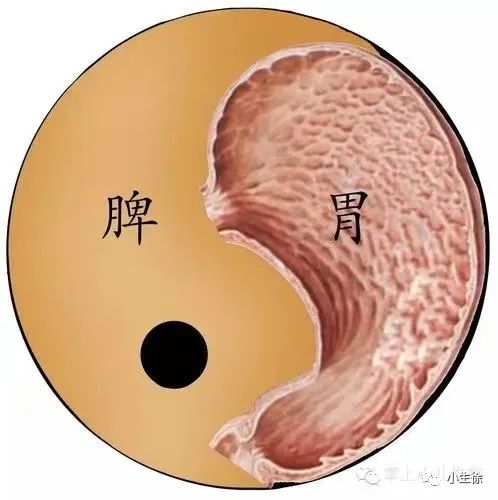
The Spleen Governs Transformation and Transportation: Transformation refers to the transportation and delivery of substances; transportation refers to digestion and transformation. The spleen governs transformation and transportation, meaning that it transforms the essence of food and drink into subtle substances and transports and distributes these substances to all organs and tissues in the body. This function mainly includes the transformation of food essence and the transformation of body fluids: ①Transformation of Food Essence: This function of the spleen simply refers to the digestion and absorption of food. After food enters the stomach and undergoes initial digestion, it enters the spleen, where the spleen further digests it, absorbs its essence, and transports the nutrient-rich food essence to the heart and lungs, transforming it into qi and blood, which are then distributed throughout the body to nourish all organs and tissues. In other words, the spleen’s transformation function is essential for providing sufficient nutrition to the organs, meridians, and tissues, maintaining normal physiological activities. After birth, to sustain life activities, one must rely on the nutrients transformed from food and drink, which is the basis for the generation of qi and blood, and the transformation of food essence is governed by the spleen, thus it is called the “foundation of postnatal life” and “the source of qi and blood generation.” ②Transformation of Body Fluids: Also known as the transformation of water and dampness, this refers to the spleen’s important role in the absorption, transportation, distribution, and excretion of body fluids. The spleen works with the lungs, kidneys, three burners, and bladder to regulate the metabolism of body fluids and maintain the balance of body fluid metabolism, which can be summarized in two aspects: one is that after body fluids enter the body, they are transformed and transported by the spleen, ascending to the lungs, where they are distributed to all organs and tissues to nourish and moisten them; the other is that excess body fluids metabolized by all organs are transformed into sweat and urine through the functions of the lungs and kidneys, which are then timely transported to the skin, bladder, and other organs for excretion, maintaining the balance of body fluid metabolism. The Spleen Governs Ascending Clarity: Ascending refers to the movement characteristics of spleen qi, which means to rise and transport upwards; clarity refers to the essence of food and other nutrients. After the spleen absorbs the essence of food, it transports it upwards to the heart and lungs, where it is transformed into qi and blood, which are then distributed throughout the body to nourish the organs and maintain their physiological activities. The ascending function of the spleen and the descending function of the stomach are complementary; the spleen’s ascending function and the stomach’s descending function must work together to complete the digestion, absorption, and distribution of food. Additionally, the spleen’s qi governs ascending, which helps keep the internal organs in relatively stable positions, while muscles, ligaments, and fascia can support and stabilize the organs, relying on the nourishment from the food essence transformed by the spleen to remain strong and healthy. The Spleen Governs Blood Regulation: Regulation means to control and manage. The spleen governs blood regulation, meaning that it has the function of controlling blood throughout the body, ensuring that blood circulates normally within the vessels without overflowing. “All blood in the five organs and six bowels relies on the spleen’s qi for regulation,” indicating that the spleen’s consolidating function is the main mechanism for blood regulation. The spleen is the source of qi and blood generation; qi leads blood, and blood follows qi. When the spleen qi is sufficient, it enhances the consolidating function of blood, ensuring that blood follows its normal path within the vessels without overflowing. The Spleen is Associated with Thought: Thought refers to contemplation and consideration, which is a state of mental awareness. Normal thinking is unobjectionable and does not affect physiological activities; however, excessive contemplation or unfulfilled thoughts can adversely affect physiological activities. Thought is associated with the spleen; when qi movement is obstructed, spleen qi becomes stagnant, which not only affects the spleen’s transformation function but also depletes heart blood, subtly harming the heart spirit. The Spleen is Associated with Flesh and Governs the Limbs: “The spleen governs the body’s muscles,” meaning that the spleen maintains the normal function of the muscles. The spleen’s transformation function determines its ability to maintain muscle function. “The spleen transforms the essence of food and drink to nourish the muscles, thus governing flesh,” meaning that all muscles in the body rely on the nourishment from the food essence transformed by the spleen to develop and remain strong. The limbs, being at the extremities of the body, are also called “the four extremities”; the normal functioning of the limbs also requires the nourishment of food essence transported by the spleen. The Spleen is Associated with the Mouth, Its Manifestation is on the Lips: The mouth is the uppermost part of the digestive tract. The spleen’s association with the mouth means that a person’s diet and taste are closely related to the spleen’s transformation function. “When spleen qi is connected to the mouth, when the spleen is harmonious, the mouth can discern the five grains.” This means that when spleen qi is healthy, appetite is strong, and taste is normal. The lips, referring to the mouth’s outer edges, are considered “the excess of the spleen,” meaning that the color of the lips is closely related to the spleen’s transformation function. When spleen qi is healthy, blood and qi are abundant, and the lips naturally appear rosy and lustrous. The Spleen is Associated with Saliva: Saliva is the clear fluid in the mouth, commonly known as “spit.” Saliva serves to protect, moisten, and cleanse the mouth, and it is secreted in larger amounts during eating to sufficiently moisten and dissolve chewed food, facilitating swallowing and digestion. Under normal physiological conditions, the essence from the spleen overflows into the mouth, transforming into saliva, but it does not overflow outside the mouth, which mainly relies on the spleen’s consolidating function. Functions: The Spleen Governs Transformation and Transportation; The Spleen Governs Blood Regulation; The Spleen Governs Ascending Clarity Characteristics: The Spleen Qi Should Ascend; The Spleen Prefers Dryness and Dislikes Dampness Connections: The Spleen Houses Intention; The Spleen is Associated with Thought; The Spleen is Associated with Flesh, Governs the Limbs; The Spleen is Associated with the Mouth, Its Manifestation is on the Lips; The Spleen is Associated with Saliva; The Spleen is Associated with Late Summer and Governs the Four Seasons
Kidney (The Root of Pre-Heaven)
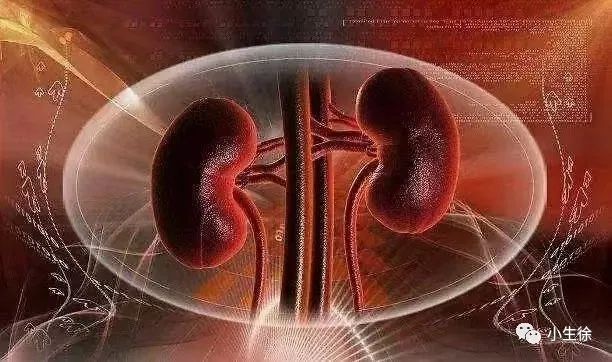
The Kidney Governs Essence Storage: The kidney governs essence storage, meaning that it has the function of storing and sealing essence, preventing the loss of essence from the body. “Essence is the root of life,” referring to essence as the fundamental substance that constitutes the human body and is essential for growth, development, and life activities. The essence stored in the kidney includes both “pre-heaven essence” and “post-heaven essence.” “At the beginning of life, essence is formed,” meaning that pre-heaven essence, also known as the essence of the kidney, is inherited from parents and is innate, serving as the original substance for reproduction and embryonic development. Post-heaven essence refers to the nutrients that sustain life activities, which are essentially the food transformed into essence by the spleen and stomach. Pre-heaven essence provides the material foundation for post-heaven essence, and post-heaven essence continuously nourishes pre-heaven essence; both are interdependent and mutually supportive. This is mainly reflected in three aspects: ①Governing Reproduction and Development: The essence stored in the kidney influences growth, development, and reproduction. Throughout a person’s life, the body undergoes physiological changes from birth to growth, maturity, aging, and death, and the essence also shows a regular pattern of change with age. From childhood, the kidney’s essence gradually increases, leading to physiological phenomena such as the growth of teeth and hair; during adolescence, kidney essence further fills to its peak, making the body stronger and bones more robust. During this period, a substance called “tian gui” develops, which promotes the maturation of the gonads; when tian gui reaches a certain level, men produce semen, and women experience regular ovulation and menstruation, gradually maturing reproductive functions. As age increases, kidney essence gradually declines, and the production of tian gui decreases, leading to diminished reproductive functions and signs of aging, such as weakened bones and hair loss. Thus, kidney essence is fundamental for reproduction, growth, and development. ②Essence Can Transform into Blood: Both pre-heaven and post-heaven essence are stored in the kidney, and kidney essence is the original substance for blood production, hence the saying “the source of blood is in the kidney.” “The kidney stores essence; essence is what blood is made of,” indicating that when kidney essence is abundant, blood is sufficient; when kidney essence is deficient, blood is insufficient. ③Regulating Overall Functional Activities: Based on the properties of yin and yang, kidney essence can be divided into kidney yin and kidney yang. Kidney yin, also known as “yuan yin,” “true yin,” “kidney water,” and “true water,” nourishes and moistens the body’s organs and tissues; kidney yang, also known as “yuan yang,” “true yang,” “dragon fire,” “true fire,” and “the fire of the gate of life,” warms and promotes the body’s organs and tissues. Both are interdependent and mutually restrictive, maintaining the relative balance of yin and yang in the organs, serving as the foundation for the yin and yang of all organs. The Kidney Governs Water: The kidney governs water, mainly referring to its crucial role in regulating and controlling the balance of body fluid metabolism. “The kidney is the water organ, governing body fluids.” Under normal physiological conditions, the metabolism of body fluids originates from the stomach’s acceptance, passing through the spleen’s transformation and transportation, the lung’s regulation, and then being distributed throughout the body. The sweat and urine produced from the metabolism of body fluids are expelled through the pores and bladder, and the entire process of body fluid metabolism must rely on the kidney’s qi transformation function, which is primarily driven by kidney yang, while also depending on the regulatory functions of both kidney yang and kidney yin. This regulatory function is often compared to “opening” and “closing”; generally, kidney yang governs opening, while kidney yin governs closing. The opening and closing of kidney qi control the downward flow of urine to the bladder and ensure that the bladder can store urine to a certain volume before timely expulsion. The Kidney Governs Qi Reception: Reception means to receive and consolidate. The kidney governs qi reception, meaning that it is related to the inhalation of qi, allowing the kidney to receive the clear qi inhaled by the lung from the environment, preventing shallow breathing and ensuring normal gas exchange between the body and the environment. Although the lung governs respiration, it must rely on the kidney’s reception function for smooth and harmonious breathing. “The lung is the master of qi, and the kidney is the root of qi; the lung governs exhalation, and the kidney governs inhalation; when yin and yang intersect, breathing is harmonious.” Only when the lung and kidney functions are coordinated can respiration be normal. In fact, the kidney’s reception function is a specific manifestation of its sealing function in the respiratory process. The Kidney is Associated with Fear: Fear refers to feelings of dread and anxiety, which are adverse emotional responses generated by external stimuli. In a state of fear, it is easy to cause blockage of qi movement in the upper body, preventing essence from ascending and instead causing it to leak downward. The Kidney is Associated with Bones, Its Manifestation is on Hair: The kidney stores essence, which can generate marrow; marrow is stored in the bones, and bone growth relies on the nourishment of marrow. Ancient texts state, “The kidney governs bones,” and “The kidney generates bone marrow.” The growth, development, and repair of bones depend on the nourishment and promotion of kidney essence. Depending on their location, marrow can be classified into bone marrow, spinal marrow, and brain marrow, all of which are generated from kidney essence. Therefore, the abundance or deficiency of kidney essence not only affects bone growth and development but also relates to the nourishment and development of marrow. The spinal marrow connects to the brain, forming the brain marrow; traditional Chinese medicine states, “The brain is the sea of marrow.” The brain marrow relies on kidney essence for continuous nourishment; when kidney essence is abundant, the brain is agile, hearing is sharp, vision is clear, and energy is abundant. Additionally, “Teeth are the excess of bones” is a saying in traditional Chinese medicine, indicating that teeth and bones share the same origin and rely on kidney essence for growth and development. “Teeth are the markers of the kidney and the foundation of bones,” meaning that the growth and loss of teeth are closely related to the abundance or deficiency of kidney essence. Essence and blood nourish each other; when kidney essence is sufficient, blood is abundant, and when blood is abundant, it can nourish hair adequately. Thus, there is a saying that “hair is the excess of blood.” Although the nourishment of hair relies on blood, its vitality originates from the kidney; the abundance or deficiency of kidney essence can be reflected in the nourishment and health of hair. The Kidney is Associated with the Ears and the Two Yin: The ears are the auditory organs, and the sensitivity of hearing depends on the abundance of kidney essence. “Kidney qi connects to the ears; when kidney qi is harmonious, the ears can hear the five sounds.” The two yin refer to the anterior and posterior yin; the anterior yin refers to the external genitalia and urethral opening, which have functions of urination and reproduction; the posterior yin refers to the anus, which has the function of excreting feces. The functions of these organs are closely related to the kidney; reproductive functions depend on the promotion of kidney essence, while the excretion of urine, although performed by the bladder, relies on the kidney’s qi transformation. The excretion of feces, which is primarily the function of the large intestine, is also related to the kidney’s qi transformation function. The Kidney is Associated with Saliva: Saliva, like mucus, is a type of oral fluid; the thicker type is called saliva, while the thinner type is called mucus. Saliva is produced under the tongue by the submandibular and sublingual glands, and under normal physiological conditions, saliva serves to moisten the mouth, cleanse the mouth, and wet food to facilitate swallowing. Functions: The Kidney Governs Essence Storage; The Kidney Governs Water; The Kidney Governs Qi Reception Characteristics: The Kidney Governs Sealing; Kidney Water Should Ascend; The Kidney Dislikes Dryness Connections: The Kidney Houses the Will; The Kidney is Associated with Fear; The Kidney is Associated with Bones, Nourishing Teeth, Its Manifestation is on Hair; The Kidney is Associated with the Ears and the Two Yin; The Kidney is Associated with Saliva; The Kidney is Associated with Winter
